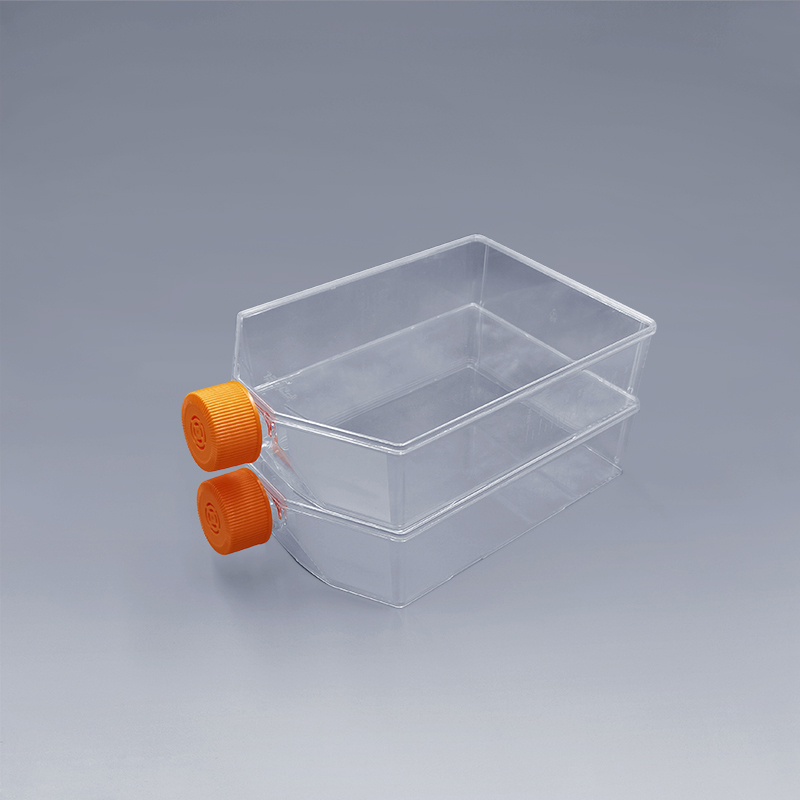زراعة الخلايا هي نوع من تقنيات التشغيل المعقمة ، والتي تتطلب أن تكون بيئة العمل وظروفه خالية من التلوث الجرثومي ولا تتأثر بعوامل ضارة أخرى. قوارير ثقافة الخلية هي مواد استهلاكية شائعة الاستخدام في تجارب الخلايا. لا يوجد DNA و RNase هي المتطلبات الأساسية للمواد الاستهلاكية. إذن كيف يمكن أن تكون قوارير زراعة الخلايا خالية من الحمض النووي و RNase؟
غرفة ثقافة الخلية ومبدأ التصميم لمنع التلوث الجرثومي والعوامل الضارة ، وتتطلب بيئة عمل نظيفة ، وهواء نقي ، جفاف ولا دخان. إن ورش الإنتاج الخاصة بقوارير زراعة الخلايا والمواد الاستهلاكية الأخرى كلها عبارة عن ورش عمل GMP على مستوى 100000 ، وورش إنتاج الأدوية البشرية هي أيضًا على مستوى 100000. لذلك ، فإن المنتجات التي يتم إنتاجها في ظل هذه الظروف تكون بشكل عام خالية من إنزيمات DNA و RNA. وبعد طرح المنتج النهائي ، سيستخدم أيضًا تجارب تدهور الحمض النووي الريبي (DNA) والحمض النووي الريبي (RNA) لاختبار المنتج ، ولا يمكن مغادرة المصنع إلا للمنتجات المؤهلة. يجب تعقيم المواد الاستهلاكية والأواني المستخدمة في زراعة الخلايا في الوقت المناسب ، ويجب إعادة تعقيمها إذا لم يتم استخدامها لأكثر من أسبوع بعد التعقيم. من الأفضل استخدام الوسط الكامل المحضر ، البنكرياتين ، برنامج تلفزيوني ، إلخ في غضون أسبوع. في نفس الوقت ، تحقق من حالة الخلية كل يوم. في غرفة الزنزانة ، يجب تقليل المشي والتحدث بأقل قدر ممكن. إذا كنت تسعل أو تعطس ، فتأكد من إدارة ظهرك إلى طاولة فائقة النظافة. الحفاظ على الصرف الصحي البيئي للمختبر وإرساء الأساس لنجاح تجربة الخلية.
Qualified cell culture flasks are a key factor to ensure cell growth. Consumables and utensils used in cell culture should be autoclaved in time, and they should be re-sterilized if they are not used for more than a week after sterilization. The prepared complete medium, pancreatin, PBS, etc. are best used up within a week. At the same time, check the cell status every day. In the cell room, you should reduce walking and talk as little as possible. If you cough or sneeze, be sure to turn your back to the ultra-clean table. Keep the laboratory's environmental sanitation and lay the foundation for the success of the cell experiment.
The FAI climbed 5.9 percent year-on-year in the first 11 months of 2018, quickening from the 5.7-percent growth in Jan-Oct, the National Bureau of Statistics (NBS) said Friday in an online statement.
The key indicator of investment, dubbed a major growth driver, hit the bottom in August and has since started to rebound steadily.
In the face of emerging economic challenges home and abroad, China has stepped up efforts to stabilize investment, in particular rolling out measures to motivate private investors and channel funds into infrastructure.
Friday's data showed private investment, accounting for more than 60 percent of the total FAI, expanded by a brisk 8.7 percent.
NBS spokesperson Mao Shengyong said funds into weak economic links registered rapid increases as investment in environmental protection and agriculture jumped 42 percent and 12.5 percent respectively, much faster than the average.
In breakdown, investment in high-tech and equipment manufacturing remained vigorous with 16.1-percent and 11.6-percent increases respectively in the first 11 months. Infrastructure investment gained 3.7 percent, staying flat. Investment in property development rose 9.7 percent, also unchanged.
 English
English



















































